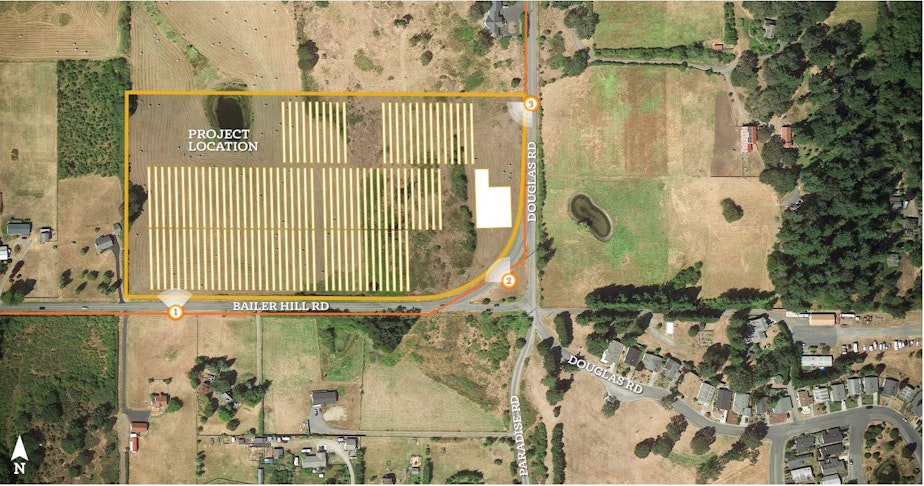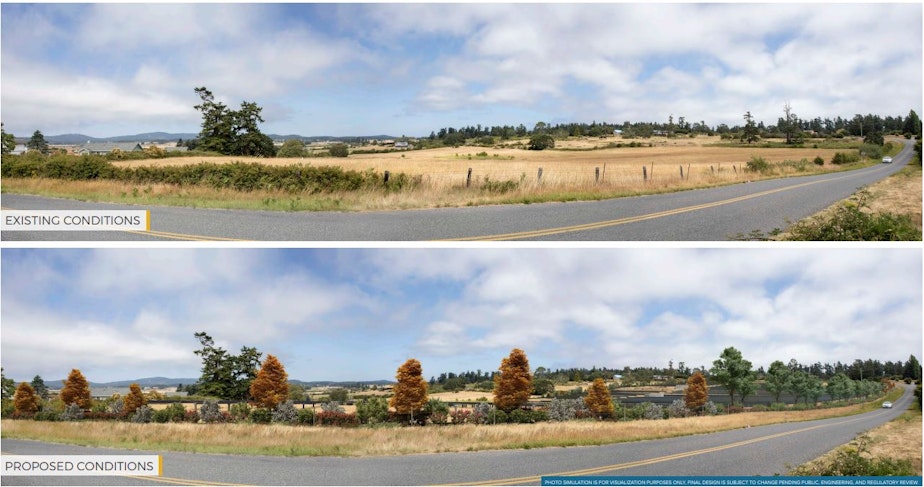Not in my valley. Some San Juan Islanders say no to solar power

On the San Juan Islands, most power comes from the Washington state mainland, by way of two underwater cables that are already nearing their limits as demand for electricity keeps growing.
The local electric utility wants to cover a pasture near the town of Friday Harbor with 5,200 solar panels to help San Juan Island avoid blackouts.
Officials with Orcas Power & Light Cooperative say the $13 million project would more than double San Juan County’s energy production, while its battery storage would smooth out the availability of power from intermittent sunshine. The 2.5-megawatt solar array would be big enough to power about 2,000 homes.
Some opponents of the project along the San Juan Island Scenic Byway say they welcome solar power, but not on San Juan Valley farmland preserved as open space.
RELATED: A new solar energy deal will bring power to 140,000 homes and businesses in 3 states
At a public meeting on the project, Foster Hildreth, general manager for Orcas Power & Light, said business as usual is “no longer available” for the island utility.
Sponsored
“Population growth, electrification of ferries, electrification of heating and transportation: All those are big loads that are by 2030 expected to basically [create] 50% more electricity need than ever before,” Hildreth said.
The utility calls the project “agri-solar” since sheep could still graze beneath the rows of solar panels, each panel swiveling on stilts to track the sun.
Utilities around the U.S. are facing local pushback as they build wind farms, solar arrays, and transmission lines to help the nation wean itself from fossil fuels and fight climate change.
Controversy over the project on San Juan Island was first reported by the Salish Current.
Former San Juan County Councilmember and planner Darcie Nielsen says she’s 100% on board with clean energy, but not at the planned location about 2 miles south of Friday Harbor in the San Juan Valley.
Sponsored
“We shouldn't be using raw, undeveloped lands for solar arrays, especially natural areas, and prime agricultural lands,” Nielsen said. “I feel strongly that actually, we should be putting these solar arrays on buildings and over parking lots and places like that.”

No more than 20% of any property within the island’s agricultural reserve, including the proposed solar-project property, can be converted to non-agricultural uses.
“That's why we wanted to maximize our grazable space and grow grass right up to the [solar-panel support] posts,” Orcas Power and Light Operations Manager Russell Guerry said.
“We are only using just over 5.5% of the parcel for non-ag use,” Guerry said.
Sponsored
In a letter to county planners, San Juan artist and project opponent Royce Meyerott called that math “a bit of a magician’s trick.”
“When viewed from a distance, this 19.26 acre property will appear totally covered by solar panels,” Meyerott said.
RELATED: From Walmart To Google, companies teaming up to buy more solar and wind power
Utility officials say that most comments they’ve received on the project have been positive, with 1,200 people already signing up to be eligible to purchase solar power from it.
Globally, March 2024 was the tenth record-hot month in a row, according to the European Union climate agency Copernicus, highlighting the urgency of switching to clean energy sources like solar and wind.
Sponsored
The San Juan County electric utility is also exploring the use of tidal power in Rosario Strait as well as looking to add a third power cable from the mainland.
“When the sun goes down, the tide’s still going to flow,” Hildreth said.
Still, utility officials don’t expect power from tidal currents to be cost-effective for another 15 years.
San Juan County is taking public comments on the proposed solar farm through April 24, when a hearing is scheduled on the project.




